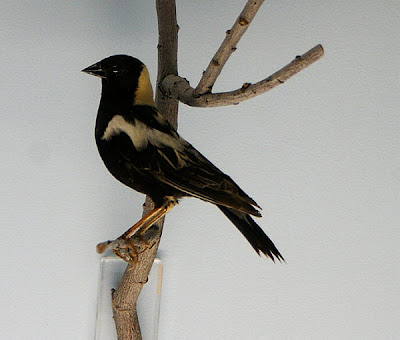 |
| White Pelicans at Mulheur Lake
Up ...
|
 |
| ...Up... |
 |
| ...and away... |
 |
| ... while others sit and chat. |
 |
| This is a wonderful place for birding and we barely got here, what a treat... |
 |
| ...even the Grebes were there to greet us. |
 |
| We checked into the Narrows RV Park a nice RV Park with good views as the sun began to set... |
 |
| ...and set it did with a bang. |
 |
| We left the RV park headed to the Mulheur headquarters and passed some beautifully arraigned round hay bales... |
 |
| ... in huge quantities. |
 |
| Finally after a short 6.3 miles we arrived at the headquarters where we were greeted by Suzanne a volunteer at the center. After an excellent orientation... |
 |
| ... we stepped out on the patio that overlooks a great pond filled with all kinds of aquatic birds... |
 |
| ... we then went on to their small but very nice museum. The first display was a white owl clutching a field mouse... |
 |
| ... and another beautiful owl that looked like it was winking at the camera. |
 |
| Some of the other birds were unusual in color ... |
 |
| ...and others in how they looked... |
 |
| ... it is no wonder so many people enjoy "bird watching" like these two... |
 |
| ... even the beautiful statue reflect our interest in viewing our feathered friends. |
 | |||
| Two beautiful black birds one with a yellow head and another with yellow on it's wings flew in for some food... |
 |
| ... and were fun to watch |
 |
| Some of the ponds had many birds, some birds were were very large. |
 |
Don't ask me why this harvester was in the field but it looked cool in the
middle of all the rushes.
|
 |
| Some birds were difficult to spot and others almost impossible... |
 |
| ...still others were impossible to find in the vegetation. |
 |
| I still don't know what this tower was for and there were no signs but it looked interesting. |
 |
Then we found the Blitzen River, and yes there is a Donner river
nearby,that butte behind the river is called "Rattlesnake Butte"
but we saw no snakes.
|
 |
| This is the bridge over the Blitzen river where I took the last picture, it is a wooden bridge. The Blitzen River is part of the nation's first redband trout reserve, established by Congress in 2000. The Redband trout is generally similar in appearance to the rainbow trout but can be differentiated by having larger, more rounded spots, parr marks that tend to remain into adulthood, are more orange-red around the lateral line, and have very distinct white tips on the anal, dorsal, and pectoral fins. |
 |
The country around eastern Oregon is amazingly beautiful and
very different from where we live in Creswell.
|
 |
| South of Buena Vista Ponds is the town of Frenchglen where the Frenchglen Hotel and State Park exist. This is the dining room where we had a great lunch. |
 |
| I liked the skull on the front porch of this hotel where Our son Isaac stayed a few months ago on a photo trip. |
 |
| It must be the perspective but looking at this picture is the Musemoblie larger than the hotel. |
 |
| The Hotel is a great historic landmark for this area and the State. |
 |
They told me at the RV park this was a controlled burn it makes
me wonder what an uncontrolled burn would look like.
|
 |
| Our beautiful Musemobile on the edge of Malhuer lake. |







No comments:
Post a Comment